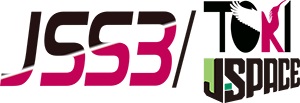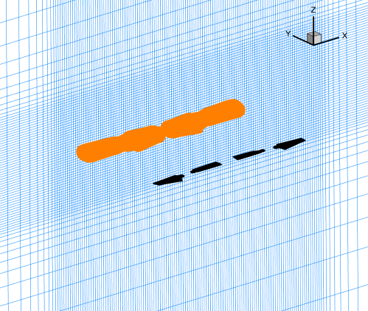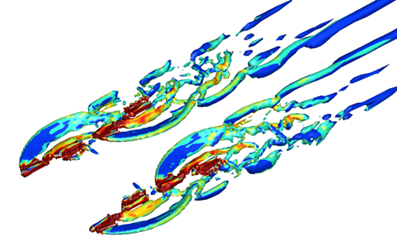Aerodynamic analysis of multirotor
JAXA Supercomputer System Annual Report February 2022-January 2023
Report Number: R22ETET41
Subject Category: Skills Acquisition System
- Responsible Representative: Hitoshi Arizono, Aeronautical Technology Directorate, Aviation Environmental Sustainability Innovation Hub
- Contact Information: Hideaki Sugawara(sugawara.hideaki@jaxa.jp)
- Members: Masahiko Sugiura, Hideaki Sugawara, Kosuke Saito, Takumi Yumino
Abstract
The flowfield around the rotor is unsteady and highly complex due to the tip vortices from the rotor blades. Multirotor drones and eVTOL aircraft have complex flowfield interference between rotors. The aerodynamic interference changes the aerodynamic performance of the rotor. This study aims to investigate the effect of aerodynamic interference between rotors on the aerodynamic performance of the rotor.
Reference URL
N/A
Reasons and benefits of using JAXA Supercomputer System
The numerical simulations of multirotor require large amount of memories and high computing capability.
Achievements of the Year
Numerical simulations are conducted to investigate the aerodynamic interference phenomenon of the multirotor and the impact of aerodynamic interference on the aerodynamic performance of the rotor. The rotorcraft CFD tool, rFlow3D, developed at JAXA is utilized in this study. The computational model is based on a quadrotor drone, and a moving overlapped grid is applied to simulate the rotation of the rotor blade, as shown in Fig. 1. Figure 2 shows the tip vorticity flowfield around the quadrotor. Simulation results show that the aerodynamic interference caused by the complex tip vorticity flowfield occurs between the front and rear rotors and significantly impacts the aerodynamic performance of the rear rotor.
Publications
N/A
Usage of JSS
Computational Information
- Process Parallelization Methods: N/A
- Thread Parallelization Methods: OpenMP
- Number of Processes: 1
- Elapsed Time per Case: 100 Hour(s)
JSS3 Resources Used
Fraction of Usage in Total Resources*1(%): 0.24
Details
Please refer to System Configuration of JSS3 for the system configuration and major specifications of JSS3.
| System Name | CPU Resources Used(Core x Hours) | Fraction of Usage*2(%) |
|---|---|---|
| TOKI-SORA | 0.00 | 0.00 |
| TOKI-ST | 1779239.54 | 1.78 |
| TOKI-GP | 0.00 | 0.00 |
| TOKI-XM | 850.59 | 0.53 |
| TOKI-LM | 46966.59 | 3.15 |
| TOKI-TST | 0.00 | 0.00 |
| TOKI-TGP | 0.00 | 0.00 |
| TOKI-TLM | 0.00 | 0.00 |
| File System Name | Storage Assigned(GiB) | Fraction of Usage*2(%) |
|---|---|---|
| /home | 726.87 | 0.66 |
| /data and /data2 | 146271.04 | 1.13 |
| /ssd | 7056.97 | 0.98 |
| Archiver Name | Storage Used(TiB) | Fraction of Usage*2(%) |
|---|---|---|
| J-SPACE | 0.00 | 0.00 |
*1: Fraction of Usage in Total Resources: Weighted average of three resource types (Computing, File System, and Archiver).
*2: Fraction of Usage:Percentage of usage relative to each resource used in one year.
ISV Software Licenses Used
| ISV Software Licenses Used(Hours) | Fraction of Usage*2(%) | |
|---|---|---|
| ISV Software Licenses(Total) | 810.18 | 0.56 |
*2: Fraction of Usage:Percentage of usage relative to each resource used in one year.
JAXA Supercomputer System Annual Report February 2022-January 2023




